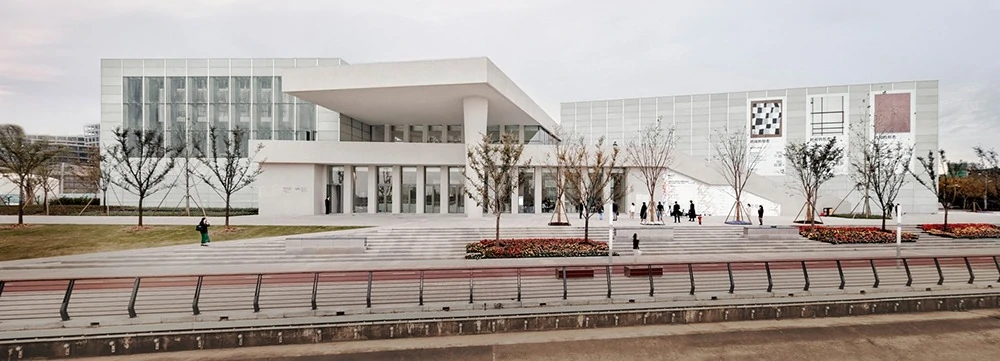By Clizia Sala
In Shanghai, only ten years ago nobody would have wanted to go for a cultural stroll along the Xuhui Waterfront. No travel guide book or city directory mentioned its West Bund Cultural Corridor, simply because it did not exist. Instead, art lovers would rather have headed to M50, a hip, cosy complex of former factories filled with independent art galleries on Moganshan Road.
That has now changed. A stone throw’s away from a pleasant riverside runway park that stretches miles along the river, the Bund Cultural Corridor now comprises dozens of Museums. The latest addition is a newly opened outpost of Paris’s Pompidou Centre, which French President Emmanuel Macron inaugurated last November.
The corridor represents the archetypal genesis of art partnerships between Chinese and foreign art institutions. “Chinese museums are strong on the hardware: they spend a lot on the architecture, but they do not invest in the software, that is on staff and curation,” says Lisa Movius, a China-based journalist specialising in visual arts.
This has resulted in Chinese museums seeking to import foreign know-how, which led to the realisation of one-time shows as well as long-term collaborations. Seizing the opportunity to fill up beautiful architecture in the Bund Cultural Corridor, partnerships with foreign art institutions have brought exhibitions of the likes of Giacometti and Warhol to the Yuz Museum, the West Bund Museum and the Long Museum. Inevitably this has culminated with the launch of one of the most prestigious art franchises in the world, the Centre Pompidou x West Bund Art Museum.
It all began in 2008. The desire to show its cultural lustre for the 2010 Shanghai Expo made the Shanghai municipality realise that the city – unlike other megalopolises in the west – lacked an art centre and that building one could yield great opportunities, both cultural and commercial. Thus, in 2008 Shanghai initiated a “comprehensive development plan along both sides of the Huangpu River” that called for the development of the Xuhui waterfront.
This stretch of land in the Xuhui District of Shanghai was only the beginning. The numerous Memorandums of Understanding signed between Chinese museums and international collections are a clear sign that the art craze has spread beyond the borders of Shanghai. The Victoria and Albert Museum in London was amongst the first to initiate a partnership in China with the Design Society in Shenzhen, for their 2017 opening. Whilst last year, the Tate signed an MoU with the Shanghai Pudong Museum of Art, which is due to open in 2021.
The latest additions to the list are a 15,000 sqm branch of Paris’s Musée Rodin, due to open in 2023 in Shenzhen, and a five-year collaboration to open Paris’s Fondation Giacometti and Musée National Picasso-Paris in Beijing’s 798 art district, both launching in June.
International museums are eager to seize the endless prospects that this art fever is bringing. And they are not the only ones. A great deal of enthusiasm comes from local property development companies and governments. The former see art spaces as a good chance to invest, but their effort is limited to building classy museums, often with the help of some ‘starchitect’.
Should the property market slow down, international museums will always be the winners in this race, as their expertise in providing trained staff and know-how will be more and more in demand for such partnerships. For them, entering China is a profitable business, that allows them to build upon their brand by getting unprecedented exposure abroad.
Regardless of the mutual benefits, these partnerships may bring by, a few factors may hinder their blooming. International museums often enter China expecting that they are going to face an identical situation to that in their country, both professionally and organisationally. “Coming from a very structured museum and history in the west to China where foreign exhibitions are a relatively new thing can be challenging for the international museums,” says Lisa.
Blaming management problems on cultural differences is sometimes the easiest way out. On the contrary, international museums should rely on the knowledge of the several local, yet foreign-trained, qualified art experts, who could help them navigate their new venture. Moreover, developing a deeper understanding of the novel reality – and rules – in which they are operating is key to setting a successful example for the art partnerships to come, and for these cultural exchanges to keep on flourishing in the future.


